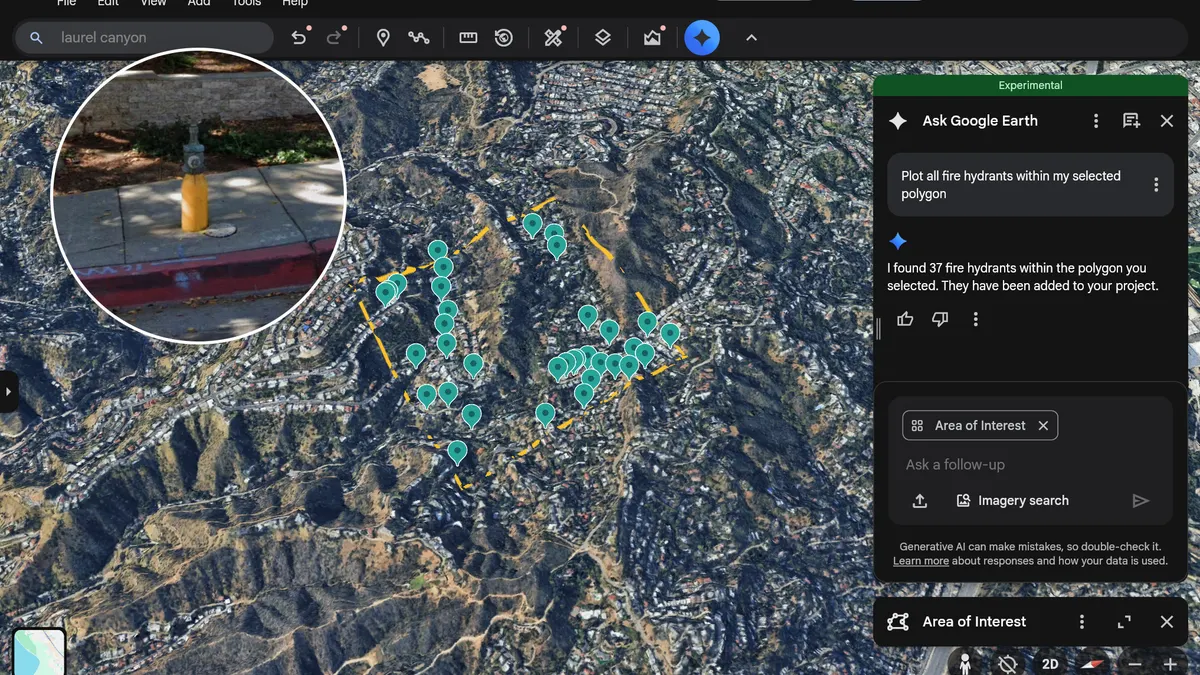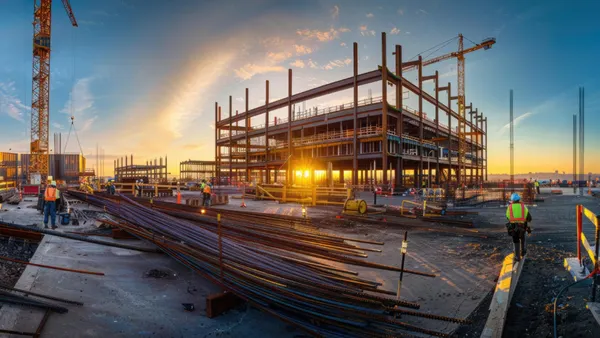Pepper Construction isn’t sitting around waiting for others to figure out how to best leverage new construction technology. It’s grabbing the bull by its horns and establishing itself as a leader in virtual design and construction, said Jennifer Suerth, vice president of technical services.
Suerth began her career at an architecture firm that was a pioneer in using Autodesk’s BIM software Revit rather than traditional CAD. She then moved on to an international engineering firm and started “naturally using technology to be a better engineer.” Her efficiency in 3D modeling didn’t go unnoticed — a contractor recruited her to join the construction side of the business to focus on virtual design and construction, or VDC, a growing specialty role in the industry.
“I had no idea the role even existed,” she recalls, “but I realized it was a lot of stuff I was already doing on the design side.” Recognizing the gap between design and construction at the time, she described the move as “a great opportunity to leverage technology for the better of construction.”
Two years ago, Suerth transitioned to her current role at Pepper Construction Group, where she leads both the implementation of technology initiatives and their role on projects.
The VDC role is not yet common. Although more companies are looking to tech to solve problems, few have made the personnel commitment Pepper has. Suerth attributes Pepper’s progressive attitude to the embrace of technology by its leadership, including CEO Stan Pepper.
“There are other companies trying to learn how to laser scan or hire a BIM person,” she told Construction Dive. “We’re already there. We are fortunate to have the right technology already established and now we’re starting to be more efficient with what we currently do and start offering more services.”
Identify the problem
The con-tech space is awash with more than 2,000 startups, making tech selection a daunting task. Rather than finding technology solutions that look like they could be helpful, however, Suerth and her team identify challenges in their current processes as a talking point in early conversations. After getting a handle on the challenges at hand, they look at the market to see what technology could be beneficial, and which capabilities the company might already have on hand.
She also describes herself as lucky for having a research and development budget. “Some technology isn’t fully baked,” she says, “but I don’t think that means you shouldn’t try it. Look at the HoloLens. There’s a lot more we can do with it but the hardware is restricting us on some level.” It’s worth it, though, not only because of the value it does bring now, but also because of the headset’s future potential and that they won’t have to learn it from scratch as it continues to evolve.
“You need to evaluate why you want to do something before you choose what you’re going to implement,” she said. “Some of it is just leaving technology out of the equation to begin with. Otherwise you just become a solution looking for a problem and it might not be the problem you were trying to solve.”
As helpful as technology is, its efficacy sometimes isn’t easily measurable. “A lot of times we’re doing something to prevent something from happening,” Suerth said. For example, 3D coordination allows for virtual clash detection before the actual installation, which, in theory, should prevent issues in the field. “If that didn’t exist, it’s hard to know what would’ve happened,” she added. “We’re constantly trying to figure out how to measure the metrics,” Suerth said. That’s difficult when the technology is used simply to avoid something happening in certain scenarios and the absence of a negative event is the desired outcome.
Other times, it’s easier to see the value, as in the case of a project located right up against the Chicago Transit Authority train tracks. The CTA required frequent updates, which Pepper could supply with 4D visual plan models tied to the schedule. The two were synced so that a member of the project team could pull it up at any given moment to see a clear picture without referring separately to logistics plans.
Implement technology in the field
Pepper is pushing to integrate more technology and improve field processes, Suerth said. For example, Pepper has a concrete group that will pour concrete not only for its own projects but also for other general contractors. The group relies heavily on laser scanning, including for flatness analysis. A scan before the pour captures rebar and other elements, and a post-pour scan allows the group to look at deflections to confirm there are no deviations from design intent. Not only does this improve the quality of work, Suerth said, but it also gives the group an opportunity to leverage the collected data downstream. If an MEP trade comes in to perform work, Pepper can supply what Suerth calls a topographical map of the slab so that they know what is inside of the concrete, so that “there are no surprises in the field.”
Pepper also is using the Microsoft HoloLens mixed-reality headset. Citing the concrete pouring division again, Suerth explains that pre-pour processes can be hectic and time-consuming, involving walking the slab, flipping through drawings and ensuring everything is kosher before the pour. “Now we have field technicians who put the HoloLens on and walk the site and can see the model of where things are,” she explains. “[The technician] doesn’t need to look at drawings or specs or even have to measure. He’s just seeing it. He can quickly inspect the slab in a way faster and higher quality time than he would have in the past.”
Train partners
Pepper, which is ranked No. 8 on this year’s ENR Top Midwest contractors list, keeps a diversified portfolio, both in terms of project size and scope. No matter the specifications, though, the company still figures out how best to integrate technology in the processes. That includes technology integrations with all partners on the project, some of which are sophisticated and some which aren’t as well-versed.
In cases where maybe not even the design partner is working in 3D modeling, for example, Pepper might take on the modeling and some subsequent training itself, said Suerth. In such cases, Suerth frequently helps set up iPads, for example, and conducts the necessary training. “Then with the next job, we’re already ahead,” she said.
In fact, the company is launching its inaugural survey of the sub-trade community to see where each stands with technology to provide a basis for focus groups and education. “We’ll actually help guide them on what makes sense based on where they’re at as a company,” she said.
Alternatively, Pepper has built a lot of third-party relationships with BIM and VDC specialists and sometimes, if the scope of work or complexity necessitates it, might call in one of those partners.
Avoid data overload
Silicon Valley has taken notice of construction’s productivity problems and has responded with myriad con-tech options. Suerth predicts tech integrations will be more prolific so that software in various parts of the construction process speak to each other.
Despite its infancy, using artificial intelligence and machine learning to automate processes is a facet of the space that is really grabbing Suerth’s attention. “With all the data we are collecting, it’s going to be huge for trying to integrate and automate our processes as much as possible,” she posited.
The flip side of the coin, however, is the possibility of harvesting bad data or too much data. “Sometimes too much information causes someone to not leverage it at all,” she said. “That’s a real challenge.”
Construction companies need not be alone in the quest for discovering the most effective technology. “We’re all pretty collaborative and there are communities we’re all part of and conferences where we share ideas,” Suerth said. “I might be an expert at one thing and have figured something out, but someone else has figured out something else I haven’t. Being open-minded and sharing ideas has made it feel a little less overwhelming. It’s exciting to see how this has become such a big part of construction. This is just the beginning."


















